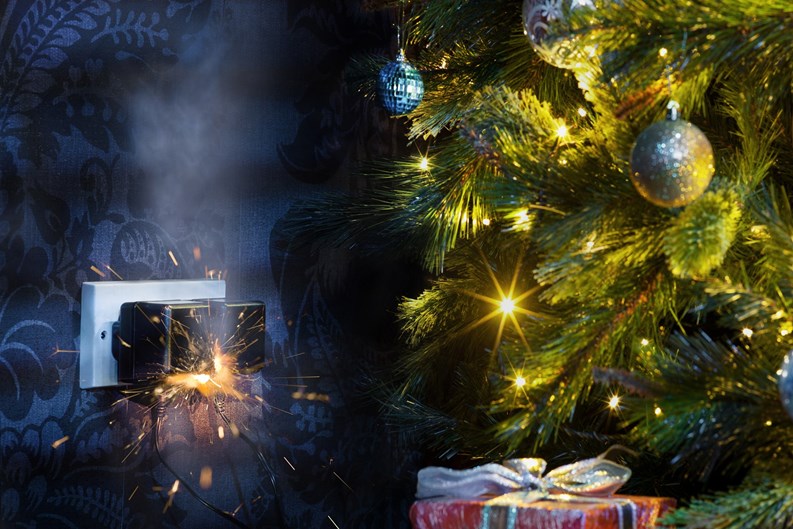Whether it's for Christmas, Hanukkah or any other occasion during the holiday season, festive decorative lighting is a traditional staple at residences. From real trees draped in blinking multicolored lights, to menorahs left burning on the windowsill, homes and apartments are awash in celebratory lights.
Sadly it’s also the time of year when fires are likely to occur due to holiday lighting. Through statistics released by the National Fire Prevention Agency (NFPA), the leading cause of fires in homes started by decorations from 2009 to 2013 is candles (38%), followed by cooking equipment (18%), intentionally started (10 %), and electrical distribution and lighting equipment (8%). And according to the New York City Fire Department (FDNY), the main issue is defective lights that cause almost half of all Christmas tree fires.
What to Do, and Not to Do
So as you're ready to decorate your tree with lighting in your home, it’s important to make sure the tree is either fire-retardant if it’s fake, or not dried out if it’s real. According to Judy Comoletti, division manager for public education at the NFPA. you should find out if you can bring a real tree into the building, as some associations won’t allow it due to the fire hazard. “You have to follow whatever the rules are,” she says.
The FDNY also notes that you shouldn’t be using actual candles to decorate a tree and that it should be kept away from an open flame or heat source. In addition they say you shouldn’t be using electric lights on metallic trees; they recommend remote spot or reflective lights.
“If you have holiday decorations in your apartment, you should be following the same safety precautions as anyone living in a home. You don’t want to leave the lights on when you aren’t home or are going to bed. You want to make sure the trees aren’t blocking a door, [and] kept away from a heat source and watered daily,” says Comoletti.
Holiday Lighting in the Common Areas
These issues aren’t only relevant to unit owners. Often associations will feel the need to get into the holiday spirit and decorate their building's common areas. In those spaces, decorations are often left unguarded.
“I’ve seen buildings with trees lit all night left unattended, but the same rules we use for homes follow for the public areas. You don’t want to leave these trees unattended,” says Comoletti. She adds that you can decorate these trees without lights because what usually goes wrong is faulty lights. “If it’s left unattended, then anything could happen.”
Don't Trust That Timer Completely
The board, or the building as a whole can put up lights, depending if the governing documents allow it. Proponents for holiday lighting may argue that nothing ever happened before or that the lights are on a timer, but that doesn’t erase the risk.
“Unless there’s someone who is going to be there and respond if something happens--even if you have a timer--something could happen during the time it’s on. Someone should be there to watch it,” says Comoletti. For example, if your building has a doorman who is also going to monitor the lights, then that would be fine. But he can’t be going off for a smoke or to talk to the super in the basement.
Comoletti also advises that you should check in with your local fire department “to see what they recommend and what’s allowed.”
Here are some other tips involving lighting and trees that FDNY Commissioner Daniel A. Nigro recommended this holiday season:
•Make sure you have a working smoke detector on every level of your home.
•Ensure power strips and extension cords are Underwriters Laboratory (UL) certified.
•Do not leave lit holiday candles unattended.
•Discard and do not use lights that have loose bulb connections.
•Read instructions to learn the number of light strands you can safely connect.
•Use clips, not nails, to hang lights, so the wiring does not get damaged.
For more information and additional safety tips, click here.
John Zurz is a staff writer and reporter with The Cooperator.





Leave a Comment